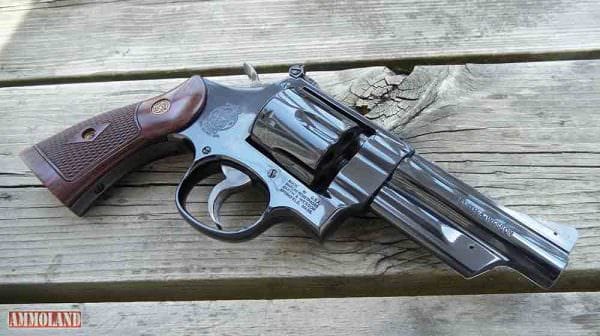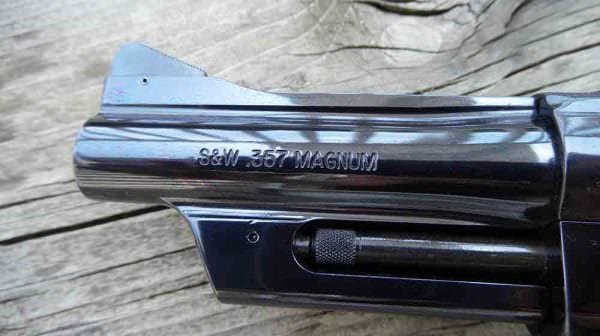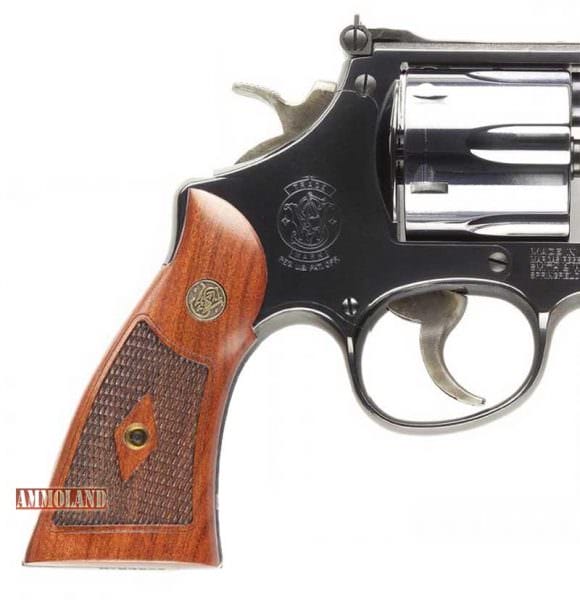by Josh Wayner
He looked at me and smiled. “Son, you know what’s wrong with those guns like the Smith & Wesson Model 27 Revolver?” Turns out…nothing.


U.S.A. –-(Ammoland.com)- They say that it is a good thing to respect your elders. I guess that I always grew up hanging out with older people at the shooting range or at matches. I was popular in school, but I never really got along with the people who were called my peers. I was an old soul and I always had an appreciation for the wisdom that I found, especially that which came from the old guys at the range.
In a way I always knew that their present would be my fate. Looking at the crusty vets and the spry old competitors I couldn’t help but place myself in their shoes as they looked back fondly at the memory of themselves at my age. I was something of an enigma to them. I was young and smart, the very definition of aimless ambition. I liked to go fast and run hard, but read Hemingway instead of playing video games. I chased the next new thing time and again, but loved the old guns from history. It would seem my interests would never settle.
One day at the range, an old guy I shot with asked me what happened to the Glock I picked up recently. Having sold it to fund the next best thing, I shrugged and told him as much.
He looked at me and smiled. “Son, you know what’s wrong with those guns?”
I prepared a list of reasons in my mind, but came up short at words like ‘reliability’ and ‘capacity’ “I don’t really know.”
“Of course you don’t. You’ve not been alive long enough to know what makes a gun stick in your hand. That black thing you sold off for the next one ain’t ever going to fill that place. A man’s gun is like him. A man’s gun has a man’s soul, and son, that plastic gun will never have a soul.”
I pondered the old man’s words and many weeks passed until I saw him again. I thought on what he meant by something having its own soul. I of course laughed at the notion that an object could live, that is until I began to understand the meaning behind his statement.
“You find yourself a better gun, boy?”
“No, sir.”
“Here. Take a look at this. This gun has been mine since I was your age. Bought it in Nevada in the summer of ’53. Never sold it or lent it out and had to chase it down. Never had a doubt in my mind that I would take this to my grave. It’s lasted me two marriages, a war, lots of deer, and now it sits by me at the end. Never once failed me. This gun, and pay attention, this gun has soul.”
He handed me a Smith & Wesson Model 27 Revolver.

I sit here on a hot summer day in 2017, drinking my coffee with a new Model 27 next to me, typing this out 64 years after he bought his Smith & Wesson Model 27 Revolver. I’ve had years now to think about what the old man said to me and what it meant to find a gun with soul. I think that after all this time I may have figured it out.
The gun next to me as of this writing is a newly produced Model 27 revolver from Smith & Wesson. It isn’t a clone or a model altered to be the Model 27, it simply is one. It is a continuation of the old line rather than an alteration or improvement.
The S & W Model 27 Revolver was the first .357 Magnum. Its origins come from its direct predecessor, the Registered Magnum. 1935 was a year to remember, as it was the year the .357 Magnum was introduced and the Registered Magnum was made available.

Right from the start, legendary names surrounded the Registered Magnum and the .357 cartridge it fired. Elmer Keith, a name you all should be familiar with, was the most prominent designer, among others, of the .357 Magnum cartridge. His work resulted in the popular acceptance of the cartridge and the massive popularity of the Registered Magnum.
Just before 1940, S&W ceased production of the Registered Magnum and so began the era of the M27. Famous figures in both the firearms industry and the world stage used the .357 Magnum. Characters such as Skeeter Skelton, General Patton, J. Edgar Hoover, FBI Agent Walter Walsh, and many others used the weapon and ammunition. The combination of Smith & Wesson and .357 Magnum would go on to be a link that could never break and defined a generation of shooters and hunters.
When I first laid eyes on the Model 27 that S&W sent me, I was happily surprised. The solid heft made me aware I was actually holding a gun, or in the old man’s words, a ‘man’s gun.’ The Smith & Wesson Model 27 Revolver was pure Old Americana. The images of yesteryear filled my mind as I looked over the featureless plastic offerings behind the glass case and then back to the 27. What I had in my hands was something that would outlast them all.

Immediately apparent is the glossy blued finish of the S&W 27 wheelgun. When the pistol came out of the waxed paper wrapper, it looked almost wet it was so evenly polished. No part of the gun was overlooked. Even the small nooks were polished up and intricately machined. Fine checkering decorates the top of the frame and barrel. The attention to detail present on the Model 27 is sadly lacking in today’s budget-minded market where mould flashing and gritty triggers are acceptable.
The lockwork on the Model 27 is just like it should be. The 6-shot cylinder locks up with a crispness that is hard to illustrate without actually putting the gun in your hand. Pulling the hammer to the rear results in a very positive ‘lock’. The final click has a musical tone that audibly tells you it is not only precise, but tuned like a performance instrument. The single action pull is like breaking a proverbial glass rod. The double action pull is smooth and stiff, just like it should be.
I took my time and carried the M27 on trail hikes and out in the woods. It is a heavy gun, but I like that it is. I’d normally consider this to be a part of my gun reviews’ ‘possible cons’ list, but this isn’t a con here. This gun is what it is meant to be and it shouldn’t be an ounce lighter than it is. If you want to get something lighter and with more capacity, by all means do so. I won’t stop you, but don’t commit the error of trying to turn this classic into something modern. This isn’t a high-cap race gun. This is a piece of history made in our era and it should be left as such. When you hold this gun, you’re grabbing right onto that history and taking a trip back. Try doing that with a plastic fantastic. The best you’d do is manage to land in the 90’s, which is a time best left forgotten to history.
I was able to fire four kinds of ammunition through the Model 27. All loads were tested at five feet from an Oehler 35P chronograph at 80 degrees Fahrenheit. Readings are the average of ten shots.
- Hornady 110gr Critical Defense .38SPL—987fps
- Hornady 135gr Critical Duty .357 Mag—1277fps
- Hornady 158gr XTP .357 Mag—1230fps
- Sig Sauer 125gr FMJ .357 Mag—1492fps
The Hornady offerings performed exactly as they should have with the 158gr XTP delivering the most ‘classic’ performance out of the gun and cartridge. I was able to make reliable hits on steel at 100 yards using all ammo types. I’m no Elmer Keith when it comes to long range revolvers, but I deemed this to certainly acceptable and in the spirit of the gun I was using.
On paper at 25 yards, the Wesson Model 27 revolver performed admirably and consistently produced ten-shot groups of 2” from the bench, with the widest groups being about 3” from the .38SPL loads. The 135gr Critical Duty load produced the best groups and was very easy to fire in the Model 27. I consider the 135gr bullet to be an excellent compromise between speed and weight. The 4” barrel of my sample is an ideal length for balancing power and aesthetic quality.

The old man in my story has since taken his own S&W Model 27 into the sunset. It took me a long time to figure out what he meant by finding a gun with soul, and I came the conclusion that it meant finding myself in what I loved. No man sees himself in a plastic gun. But in every man’s heart they hear the call to blued steel and checkered hardwood. There is the image of late night diners and glowing signs down in Nevada as you drive that lonely road in 1953. You ride into that night knowing that you’re not alone because you have Smith & Wesson riding next to you and you know that gun has soul.
About Josh Wayner:
Josh Wayner has been writing in the gun industry for five years. He is an active competition shooter with 14 medals from Camp Perry. In addition to firearms-related work, Josh enjoys working with animals and researching conservation projects in his home state of Michigan.
